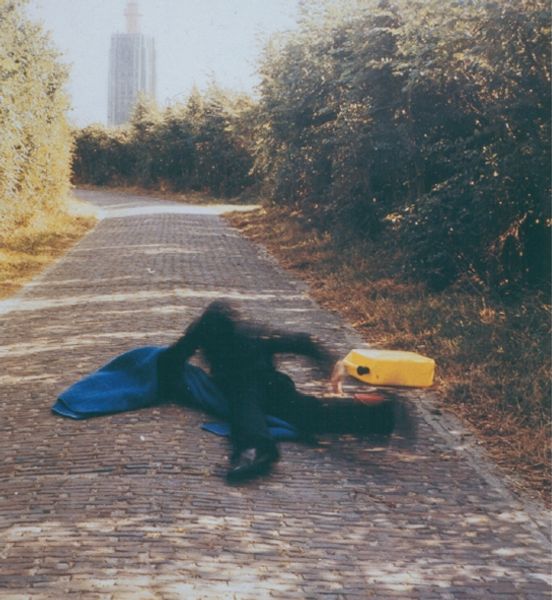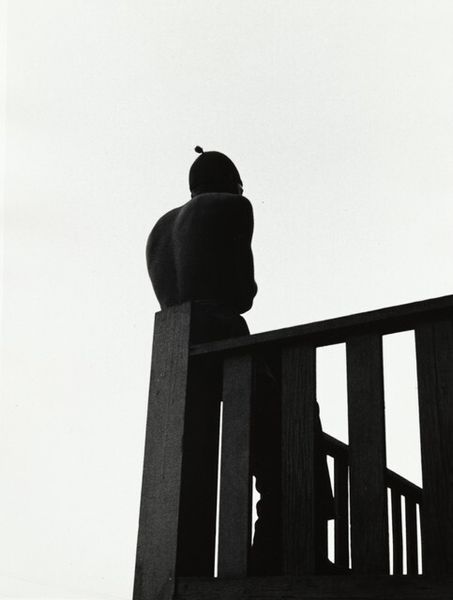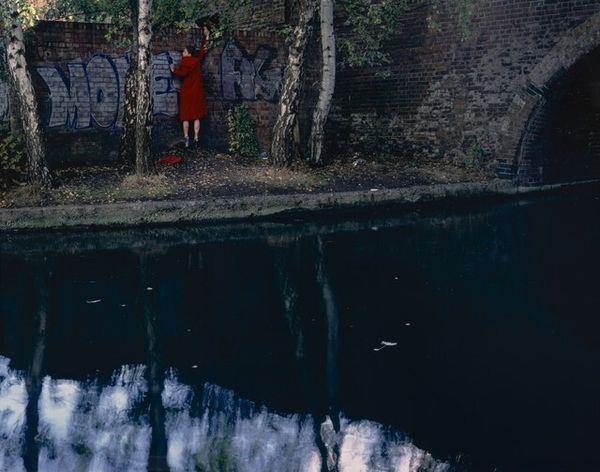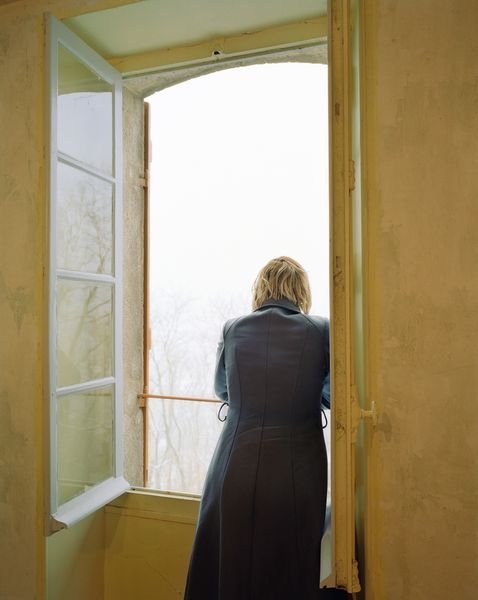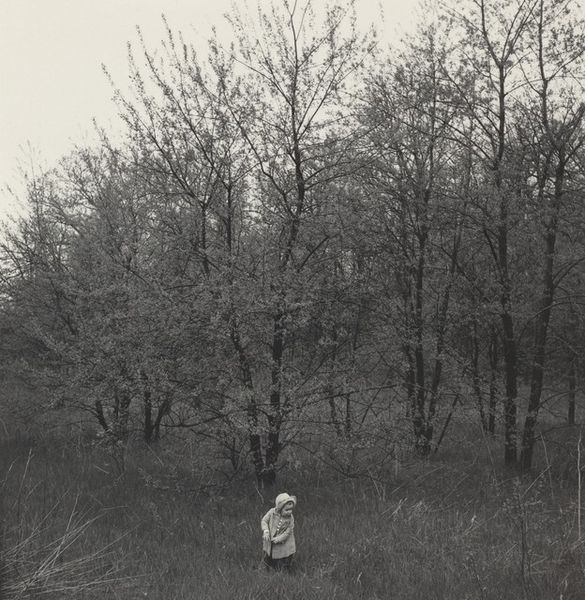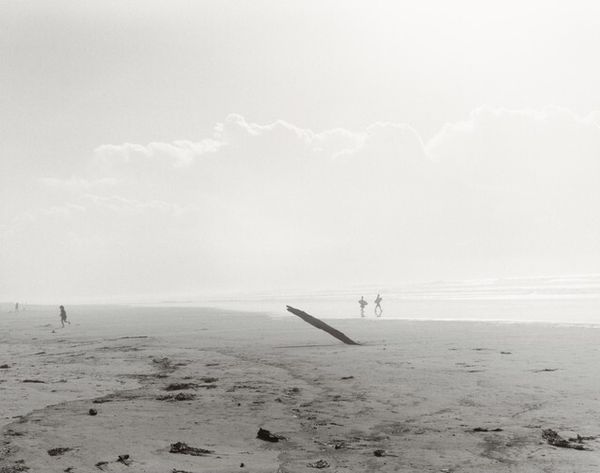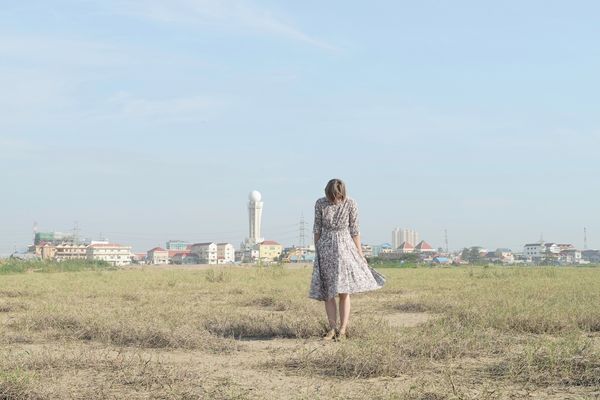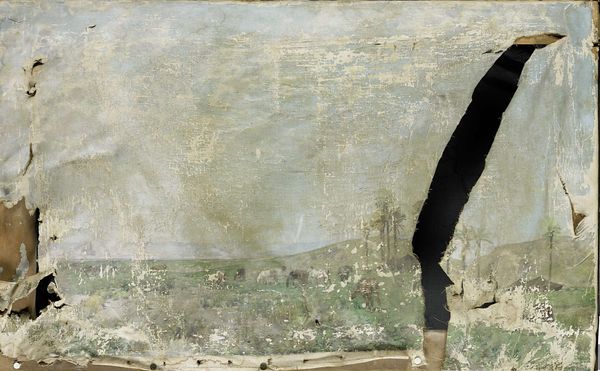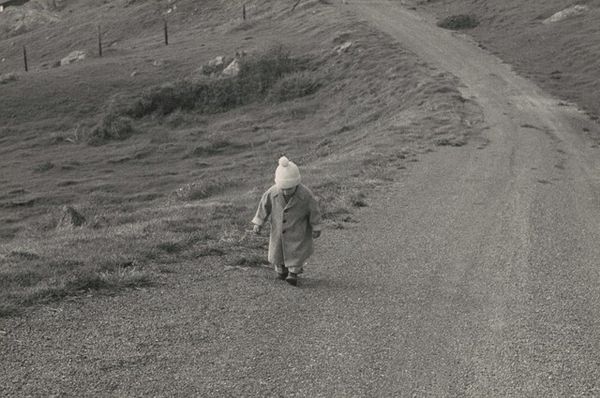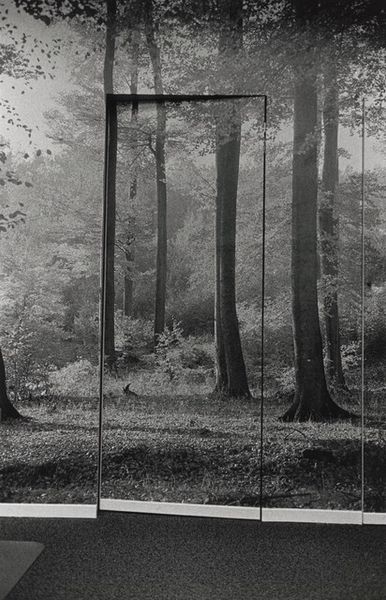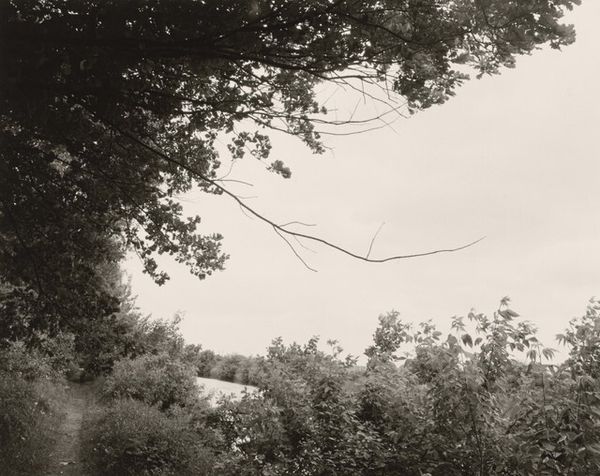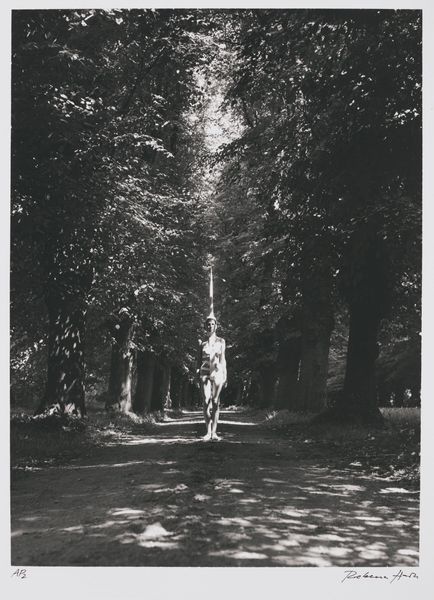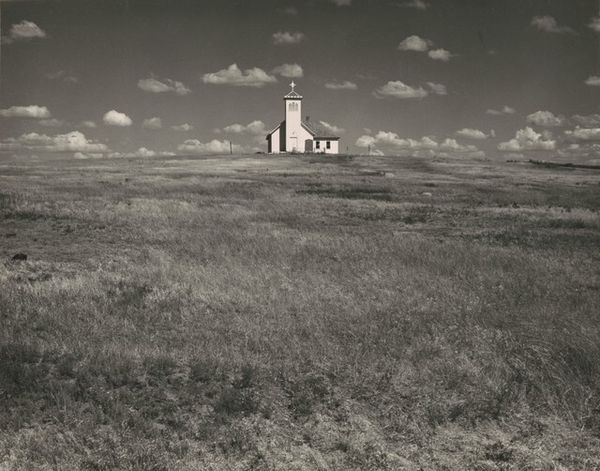
performance, photography, site-specific
#
performance
#
conceptual-art
#
actionism
#
landscape
#
postminimalism
#
photography
#
site-specific
Dimensions: image: 27 x 20.5 cm (10 5/8 x 8 1/16 in.)
Copyright: National Gallery of Art: CC0 1.0
Editor: This photograph, titled "Broken Fall (Geometric), Westkapelle, Holland," was created by Bas Jan Ader in 1971. It depicts what looks like a performance captured on film. The dark, blurred figure tumbling from a ladder or structure seems quite unsettling against the otherwise calm, slightly faded landscape. What's your interpretation of this piece? Curator: This work, presented through the medium of photography but also incorporating performative and site-specific elements, reflects Ader's fascination with failure and gravity. Think about the historical context: post-minimalism saw artists challenging the established art institutions and experimenting with process and the body. This piece participates in a broader examination of physical vulnerability in art that was prevalent in the 1970s. What do you notice about the background and how it plays into the performance? Editor: Well, the stark, boxy lighthouse is framed by lush trees. I guess it highlights the contrast between the natural setting and a sort of modern alienation in Ader’s performed "fall." The very ordinariness of this rural roadside creates a jarring dissonance with the shocking, singular, staged "fall." Curator: Exactly. The ordinariness is a key factor. By performing such an abrupt, physical act in a mundane location, Ader’s action disrupts societal expectations. The site becomes a stage where the artist grapples with physical limits, evoking questions about the artist's role within a constructed reality. Where would one normally fall, where is the fall noticed, and where is its context elevated to symbolic proportions? What kind of viewership did this performance and image expect? Editor: This makes me think about how crucial the medium is in shaping how we experience the work, almost like the photo *is* the performance, especially now decades later. I guess this work really challenges where art can happen, and how it creates meaning for us as viewers. Curator: Yes. And how meaning changes over time and with historical and social context. Ader's work asks us to think about those changes and our place within them. Editor: That’s given me a lot to consider!
Comments
No comments
Be the first to comment and join the conversation on the ultimate creative platform.
